Published in 2016 by Enslow Publishing, LLC
101 W. 23rd Street, Suite 240, New York, NY 10011
Copyright 2016 by Robert Gardner
All rights reserved.
No part of this book may be reproduced by any means without the written permission of the publisher.
Cataloging-in-Publication Data
Gardner, Robert.
Forensic science experiments in your own crime lab / by Robert Gardner.
p. cm. (Design, build, experiment)
Includes bibliographical references and index.
ISBN 978-0-7660-6955-8 (library binding)
1. Forensic sciencesExperimentsJuvenile literature. 2. Science projectsJuvenile literature. I. Gardner, Robert, 1929. II. Title.
HV8073.8 G36 2016
363.25d23
Printed in the United States of America
To Our Readers: We have done our best to make sure all Web site addresses in this book were active and appropriate when we went to press. However, the author and the publisher have no control over and assume no liability for the material available on those Web sites or on any Web sites they may link to. Any comments or suggestions can be sent by e-mail to .
Portions of this book originally appeared in the book Forenisc Science Projects With a Crime Lab You Can Build.
Illustration credits: Jonathan Moreno; pialhovik/iStock/Thinkstock (graph paper background throughout book)
Photo credits: Enslow Publishing, LLC, pp..
Cover illustrations: Olga Sapegina/Hemera/Thinkstock (student); Torsak Thammachote/Shutterstock.com (fingerprint).
Contents
Introduction
The Scientific Method
Safety First
Chapter 1. Building a Crime Lab
1.1Build Your Fingerprint Lab Station
1.2Build Your Glass Analysis Lab Station
1.3Build Your Document Analysis Lab Station
1.4Build Your Forensic Chemistry Lab Station
Chapter 2. Some Crime-Solving Skills
2.1Sight Observations
2.2Observations with Your Other Senses
 2.3Testing Eyewitnesses
2.3Testing Eyewitnesses
2.4Testing Earwitnesses
Chapter 3. Prints and Imprints
3.1Recording Fingerprints
 3.2Classifying Fingerprints
3.2Classifying Fingerprints
3.3Identifying Fingerprints
 3.4Lifting Fingerprints
3.4Lifting Fingerprints
 3.5Viewing Latent Fingerprints
3.5Viewing Latent Fingerprints
3.6Recording Lip Prints
3.7Casting Footprints
3.8Studying Voiceprints
Chapter 4. Solving Crimes Using the Physical Sciences
4.1What Are These White Solids?
4.2Glass as Evidence
 4.3Density and Glass Evidence
4.3Density and Glass Evidence
4.4Refractivity and Glass Evidence
 4.5Refractivity by Immersion and Glass as Evidence
4.5Refractivity by Immersion and Glass as Evidence
Chapter 5 Solving Crimes Using the Biological Sciences
5.1Teeth Impressions
5.2Studying Bones to Solve Crimes
5.3Microbe Clues in Drowning Cases
 5.4Decomposition Clues
5.4Decomposition Clues
 5.5Temperature and Time of Death
5.5Temperature and Time of Death
5.6DNA Evidence
5.7Blood Evidence
5.8Spatter Science: Blood Drops and Splashes
5.9Studying Hair Evidence
5.10Studying Fiber Evidence
Chapter 6. Crimes With Documents
6.1Is It Real or Counterfeit?
6.2Indented Writing Evidence
 6.3Handwriting Evidence
6.3Handwriting Evidence
6.4Ink Evidence
6.5Piecing It Back Together
6.6Using Invisible Inks
6.7Can You Break the Codes?
Answers to Some Questions in this Book
Appendix: Science Supply Companies
Further Reading and Web Sites
Index
Introduction
The science and scientific techniques used to solve crimes are called forensic science. It is often used in courts to prove the guilt of a person accused of a crime. But it can also be used to prove a persons innocence. For example, a number of people put in prison have later been released. They were convicted before DNA testing was developed. Once DNA testing became available, it proved their innocence.
Edmond Locard (18771966), a French criminalist, is regarded by many as the father of forensic science. Locard proposed that every criminal leaves something at the scene of his crime and carries away something from that crime.
The things left or taken often provide the evidence needed to convict the guilty person. According to Locard, Every contact leaves a trace.
Using this book you can build your own crime lab. It will contain some of the items used by forensic scientists to help solve crimes. If you find that you enjoy this type of science, you may have discovered your future occupation. Many Forensic Science Experiments in Your Own Crime Lab colleges offer courses in forensic science that can lead to a great career.
At times, you may need a partner. You should work with someone who enjoys experimenting and solving crimes as much as you do. In that way, you will both enjoy what you are doing. This book will alert you to any danger involved in doing an experiment. In some cases, to avoid danger, you will be asked to work with an adult. Please do so. Do not take any chances that could lead to an injury.
Like any good scientist, you should record your ideas, notes, data, and anything you can conclude from your investigations in a notebook. By so doing, you can keep track of the information you gather and the conclusions you reach. It will allow you to refer to things you have done and help you in doing other projects in the future.
SCIENCE FAIRS
Some of the investigations in this book contain ideas you might use at a science fair. Those projects are indicated with a  symbol. However, judges at science fairs do not reward projects that are simply copied from a book. For example, sample fingerprints of different people would not impress most judges; however, using those fingerprints to establish the percentage of people with certain fingerprint patterns or developing techniques to lift (remove) fingerprints from surfaces would be more likely to attract their attention.
symbol. However, judges at science fairs do not reward projects that are simply copied from a book. For example, sample fingerprints of different people would not impress most judges; however, using those fingerprints to establish the percentage of people with certain fingerprint patterns or developing techniques to lift (remove) fingerprints from surfaces would be more likely to attract their attention.
Science fair judges tend to reward creative thought and imagination. It is dicult to be creative or imaginative unless you are really interested in your project; therefore, try to choose an investigation that appeals to you. Before you jump into a project, consider, too, your own talents and the cost of the materials you will need.
If you decide to use an experiment or idea found in this book for a science fair, you should find ways to modify or extend it. This should not be dicult because you will discover that new ideas come to mind as you carry out investigations. Ideas will come to you that could make excellent science fair projects, particularly because the ideas are your own and are interesting to you.
If you decide to enter a science fair and have never done so, you should read some of the books listed in the Further Reading section. These books deal specifically with science fairs and provide plenty of hints and useful information that will help you avoid pitfalls that sometimes plague first-time Forensic Science Experiments in Your Own Crime Lab entrants. You will learn how to prepare appealing reports that include charts and graphs, how to set up and display your work, how to present your project, and how to talk to judges and visitors.





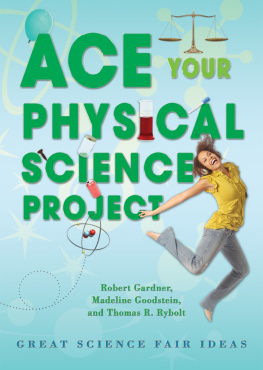
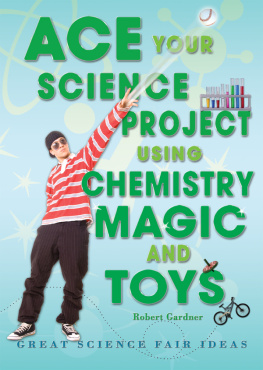
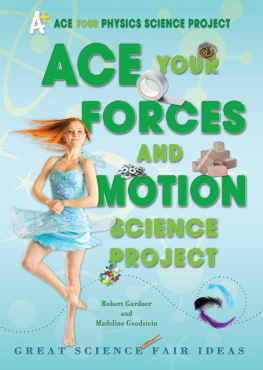



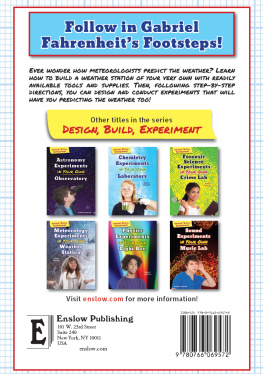

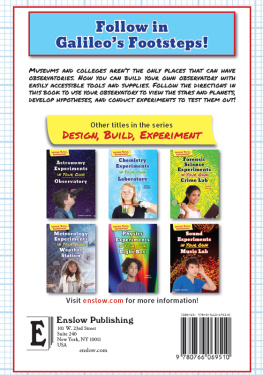
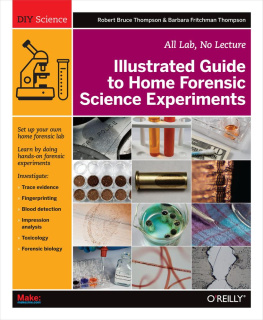
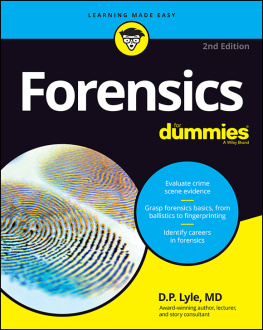
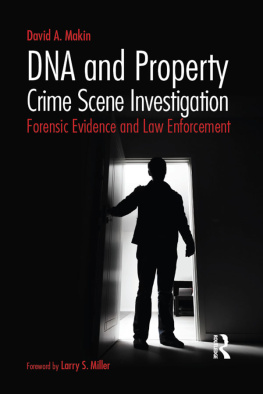
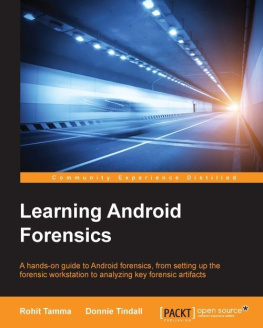
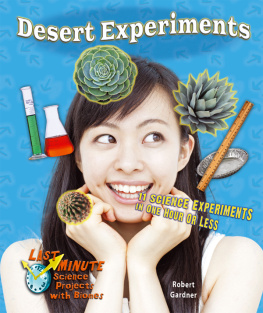

 2.3Testing Eyewitnesses
2.3Testing Eyewitnesses symbol. However, judges at science fairs do not reward projects that are simply copied from a book. For example, sample fingerprints of different people would not impress most judges; however, using those fingerprints to establish the percentage of people with certain fingerprint patterns or developing techniques to lift (remove) fingerprints from surfaces would be more likely to attract their attention.
symbol. However, judges at science fairs do not reward projects that are simply copied from a book. For example, sample fingerprints of different people would not impress most judges; however, using those fingerprints to establish the percentage of people with certain fingerprint patterns or developing techniques to lift (remove) fingerprints from surfaces would be more likely to attract their attention.